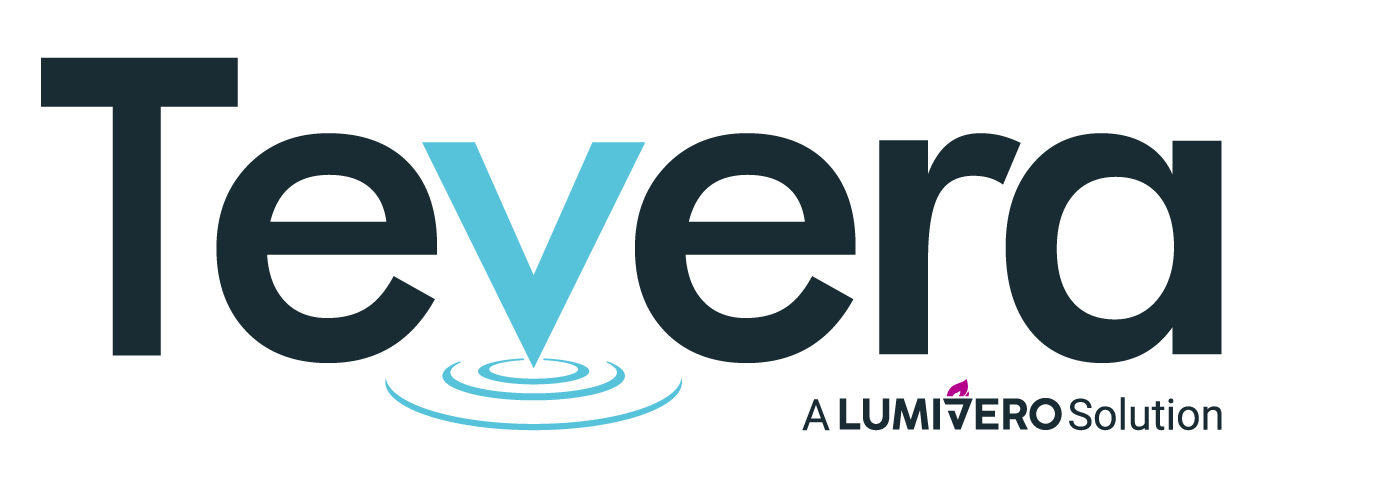What is an Integrated Software Platform?
An integrated software platform is a comprehensive system that combines multiple software applications into one unified platform. It allows for seamless communication and data sharing between different functions within an organization, improving efficiency, collaboration, and productivity.
In higher education, the importance of having cohesive and efficient management systems can’t be overstated. Whether you’re running a teacher education, social work, counselor education, business education, or any college program with a field component, the tools you use to manage your programs can significantly impact the overall effectiveness and efficiency of your educational services.
One critical decision administrators often face is whether to utilize an integrated software platform or employ a piecemeal approach that combines several disparate systems. Because the former may require purchasing a new system and the latter may be the result of years of piecing systems together, a look at some of the hidden costs of disparate systems can help program leaders make the best decision for their programs.
The Piecemeal Approach: A Jigsaw Puzzle
In the realm of software management, one of the common pitfalls programs face is the use of disparate software systems that do not integrate well with each other. At face value, it may seem that using various specialized systems provides the best solution for specific needs. However, hidden costs lurk beneath the surface when these systems fail to communicate efficiently. This article delves into the research on the hidden costs associated with software systems that don’t work well together.
First, navigating through multiple systems can be overwhelming for both staff and students, as each software has its unique user interface and functionality. This can lead to inefficiency, miscommunication, and unnecessary administrative burdens.
Moreover, the lack of data integration between these systems can hinder the comprehensive analysis of students’ performance, staff effectiveness, and overall program outcomes. This disjointed approach might mean that faculty cannot seamlessly integrate feedback from fieldwork assessments, coursework grades, and other evaluative metrics used for student evaluation and program-wide assessment used for accreditation reporting.
5 Hidden Costs of Disparate Software Systems
When disparate software tools and systems are used for program management, there are a number of hidden costs that don’t show up explicitly in annual budgets, but can significantly impact the overall performance of your program through inefficiencies that increase staffing requirements. In an era when every budget dollar counts and leaders look for ways to ‘do more with less,’ these inefficiencies can quickly add up:
Maintenance and Support
When you have multiple software systems that don’t integrate well, a significant portion of your staff’s time goes into managing these systems, from resolving compatibility issues to updating each system independently. Maintaining staff with the knowledge and expertise to manage and fix these software issues can be a significant hidden cost.
Reduced Productivity
Another hidden cost associated with non-integrated software systems is decreased productivity. Administrative staff and faculty often have to navigate between different systems, manually inputting data into each one, and then reconciling inconsistencies. Outdated and/or non-integrated technology can significantly hamper productivity.
Increased Costs Over Time
Interestingly, some studies have shown that software purchase expenditures account for only approximately 30 percent of the total cost of ownership (TCO). The majority of costs come from hidden aspects such as training, implementation, maintenance, updates, and scalability, especially when dealing with disparate systems that don’t work well together, requiring their own set of training, maintenance, and updates for each system. This is where the use of SAAS applications like Tevera can help reduce costs and streamline processes.
Compatibility Issues
Different software systems might not work well together due to compatibility issues, which can lead to data inconsistencies, redundancies, and potential loss. This lack of seamless data transfer can create a host of problems, from inaccurate reporting to decision-making based on faulty data. These indirect costs might not show up on a balance sheet, but they can have a significant impact on your program’s success in the long run.
Duplicative Training and Onboarding
Every new software system requires training and onboarding for the staff who will be using it. If you have multiple, non-integrated systems, the time and resources spent on training can quickly add up, becoming a significant hidden cost. Moreover, each system has its own learning curve, which means it may take some time before your staff can use it efficiently, leading to reduced productivity during this learning period.
While it might seem attractive to use specialized software for different tasks, it’s important to consider the hidden costs of using software systems that don’t integrate well. These costs, such as increased maintenance and support, reduced productivity, and increased training and onboarding costs, can significantly impact your program’s bottom line and overall efficiency.
An Integrated Software Platform: A Symphony of Efficiency
On the other hand, an integrated software platform brings together all the necessary tools for managing a college program under one umbrella. Here are a few of the significant advantages of this approach:
User-friendly Experience
Integrated platforms usually have a consistent user interface, which makes them easier to navigate for students, faculty, and administrative staff. This allows everyone to spend less time figuring out how to use the system and more time on the tasks at hand. Enterprise application integrated platforms can further enhance the efficiency of these platforms by seamlessly connecting different systems and applications, allowing for smoother data flow and reducing the need for manual data entry. Cloud-based integration is a popular solution for enterprise application integration, as it offers scalability, flexibility, and cost-effectiveness.
Streamlined Communication
Integrated systems allow for seamless communication between different stakeholders within the program. For example, in programs using integrated software platforms like Tevera, faculty can easily share updates about curriculum changes, share learning resources, and engage in real-time communication with students and field supervisors.
Data Integration and Analytics
All data—such as student grades, attendance, and engagement metrics—are stored in one place, which makes analysis and reporting much easier and more efficient. This helps in tracking students’ progress, identifying areas of improvement, and making informed decisions about the program.
Cost and Time Efficiency
Having a single, integrated platform is often more cost-effective than subscribing to multiple separate software solutions. In addition, the time saved from not having to switch between systems can lead to increased productivity.
Consistent Updates and Support
With an integrated platform, updates and improvements are consistent across the system, making it easier for users to adapt. Plus, users have one point of contact for support, which simplifies troubleshooting when issues arise.
The advantages of using an integrated software platform are compelling for managing college programs for a variety of reasons. This holistic approach ensures that educators, students, and administrators can focus more on the quality of education and less on administrative tasks.
The Integrated Platform for Student Competency Development: Spotlight on Tevera
In the world of higher education, managing the multifaceted components of a college program can be a challenging task. From tracking field experience to managing assessments and analyzing program outcomes, the administrative load can be substantial. That’s where integrated software platforms come in. A case in point is Tevera, which has transformed how college programs are managed by providing an all-in-one solution that’s as comprehensive as it is efficient.
Tevera: The ‘Prove it’ Platform
Tevera is often referred to as the “prove it” platform. It combines three crucial components of a comprehensive education management system—field experience, assessment management, and program outcomes—into a single, integrated platform. The beauty of this is Tevera’s ability to provide a comprehensive snapshot of a student’s educational journey, from real-world experience to performance assessment and beyond. In addition, Tevera excels at program-wide reporting needed for accreditation and program improvement.
Elevating Field Experience Management
One of the features of Tevera that stands out is field experience management. Field experience forms a critical component of many college programs, particularly those in fields like social work, counselor education, and teacher education. By integrating field experience into the platform, Tevera allows both students and faculty to track and manage these experiences in real-time. This not only facilitates better communication and feedback but also helps to ensure that students are meeting their experiential learning goals.
Streamlining Assessment Management
Assessment management is another crucial area that Tevera has expertly integrated into its program management platform. Through its comprehensive assessment management system, faculty can easily develop, distribute, and grade assessments, and students can access and submit these assessments all in one place. This streamlined process reduces administrative load and enhances the effectiveness and efficiency of the assessment process.
Driving Program Outcomes
Finally, Tevera offers the ability to track and analyze program outcomes. This feature allows faculty and administrators to easily assess the effectiveness of their programs, identify areas of improvement, and make data-informed decisions to enhance the quality of education. In addition, it provides a clear and transparent way for programs to demonstrate their successes to accrediting bodies, stakeholders, and potential students.
Tevera: The All-in-One Education Management Platform™
Tevera showcases the advantages of using an integrated platform for managing college programs. By focusing on student competency development and reducing administrative burdens, Tevera allows program administrators, program leaders, faculty, and field supervisors to focus on what matters most—providing high-quality education that prepares students for their future careers.
Take a look and see how Tevera can streamline your program!
SOLUTIONS
RELATED POSTS
PRODUCT OVERVIEW
See how Tevera can elevate your program.
What is an Integrated Software Platform?
An integrated software platform is a comprehensive system that combines multiple software applications into one unified platform. It allows for seamless communication and data sharing between different functions within an organization, improving efficiency, collaboration, and productivity.
In higher education, the importance of having cohesive and efficient management systems can’t be overstated. Whether you’re running a teacher education, social work, counselor education, business education, or any college program with a field component, the tools you use to manage your programs can significantly impact the overall effectiveness and efficiency of your educational services.
One critical decision administrators often face is whether to utilize an integrated software platform or employ a piecemeal approach that combines several disparate systems. Because the former may require purchasing a new system and the latter may be the result of years of piecing systems together, a look at some of the hidden costs of disparate systems can help program leaders make the best decision for their programs.
The Piecemeal Approach: A Jigsaw Puzzle
In the realm of software management, one of the common pitfalls programs face is the use of disparate software systems that do not integrate well with each other. At face value, it may seem that using various specialized systems provides the best solution for specific needs. However, hidden costs lurk beneath the surface when these systems fail to communicate efficiently. This article delves into the research on the hidden costs associated with software systems that don’t work well together.
First, navigating through multiple systems can be overwhelming for both staff and students, as each software has its unique user interface and functionality. This can lead to inefficiency, miscommunication, and unnecessary administrative burdens.
Moreover, the lack of data integration between these systems can hinder the comprehensive analysis of students’ performance, staff effectiveness, and overall program outcomes. This disjointed approach might mean that faculty cannot seamlessly integrate feedback from fieldwork assessments, coursework grades, and other evaluative metrics used for student evaluation and program-wide assessment used for accreditation reporting.
5 Hidden Costs of Disparate Software Systems
When disparate software tools and systems are used for program management, there are a number of hidden costs that don’t show up explicitly in annual budgets, but can significantly impact the overall performance of your program through inefficiencies that increase staffing requirements. In an era when every budget dollar counts and leaders look for ways to ‘do more with less,’ these inefficiencies can quickly add up:
Maintenance and Support
When you have multiple software systems that don’t integrate well, a significant portion of your staff’s time goes into managing these systems, from resolving compatibility issues to updating each system independently. Maintaining staff with the knowledge and expertise to manage and fix these software issues can be a significant hidden cost.
Reduced Productivity
Another hidden cost associated with non-integrated software systems is decreased productivity. Administrative staff and faculty often have to navigate between different systems, manually inputting data into each one, and then reconciling inconsistencies. Outdated and/or non-integrated technology can significantly hamper productivity.
Increased Costs Over Time
Interestingly, some studies have shown that software purchase expenditures account for only approximately 30 percent of the total cost of ownership (TCO). The majority of costs come from hidden aspects such as training, implementation, maintenance, updates, and scalability, especially when dealing with disparate systems that don’t work well together, requiring their own set of training, maintenance, and updates for each system. This is where the use of SAAS applications like Tevera can help reduce costs and streamline processes.
Compatibility Issues
Different software systems might not work well together due to compatibility issues, which can lead to data inconsistencies, redundancies, and potential loss. This lack of seamless data transfer can create a host of problems, from inaccurate reporting to decision-making based on faulty data. These indirect costs might not show up on a balance sheet, but they can have a significant impact on your program’s success in the long run.
Duplicative Training and Onboarding
Every new software system requires training and onboarding for the staff who will be using it. If you have multiple, non-integrated systems, the time and resources spent on training can quickly add up, becoming a significant hidden cost. Moreover, each system has its own learning curve, which means it may take some time before your staff can use it efficiently, leading to reduced productivity during this learning period.
While it might seem attractive to use specialized software for different tasks, it’s important to consider the hidden costs of using software systems that don’t integrate well. These costs, such as increased maintenance and support, reduced productivity, and increased training and onboarding costs, can significantly impact your program’s bottom line and overall efficiency.
An Integrated Software Platform: A Symphony of Efficiency
On the other hand, an integrated software platform brings together all the necessary tools for managing a college program under one umbrella. Here are a few of the significant advantages of this approach:
User-friendly Experience
Integrated platforms usually have a consistent user interface, which makes them easier to navigate for students, faculty, and administrative staff. This allows everyone to spend less time figuring out how to use the system and more time on the tasks at hand. Enterprise application integrated platforms can further enhance the efficiency of these platforms by seamlessly connecting different systems and applications, allowing for smoother data flow and reducing the need for manual data entry. Cloud-based integration is a popular solution for enterprise application integration, as it offers scalability, flexibility, and cost-effectiveness.
Streamlined Communication
Integrated systems allow for seamless communication between different stakeholders within the program. For example, in programs using integrated software platforms like Tevera, faculty can easily share updates about curriculum changes, share learning resources, and engage in real-time communication with students and field supervisors.
Data Integration and Analytics
All data—such as student grades, attendance, and engagement metrics—are stored in one place, which makes analysis and reporting much easier and more efficient. This helps in tracking students’ progress, identifying areas of improvement, and making informed decisions about the program.
Cost and Time Efficiency
Having a single, integrated platform is often more cost-effective than subscribing to multiple separate software solutions. In addition, the time saved from not having to switch between systems can lead to increased productivity.
Consistent Updates and Support
With an integrated platform, updates and improvements are consistent across the system, making it easier for users to adapt. Plus, users have one point of contact for support, which simplifies troubleshooting when issues arise.
The advantages of using an integrated software platform are compelling for managing college programs for a variety of reasons. This holistic approach ensures that educators, students, and administrators can focus more on the quality of education and less on administrative tasks.
The Integrated Platform for Student Competency Development: Spotlight on Tevera
In the world of higher education, managing the multifaceted components of a college program can be a challenging task. From tracking field experience to managing assessments and analyzing program outcomes, the administrative load can be substantial. That’s where integrated software platforms come in. A case in point is Tevera, which has transformed how college programs are managed by providing an all-in-one solution that’s as comprehensive as it is efficient.
Tevera: The ‘Prove it’ Platform
Tevera is often referred to as the “prove it” platform. It combines three crucial components of a comprehensive education management system—field experience, assessment management, and program outcomes—into a single, integrated platform. The beauty of this is Tevera’s ability to provide a comprehensive snapshot of a student’s educational journey, from real-world experience to performance assessment and beyond. In addition, Tevera excels at program-wide reporting needed for accreditation and program improvement.
Elevating Field Experience Management
One of the features of Tevera that stands out is field experience management. Field experience forms a critical component of many college programs, particularly those in fields like social work, counselor education, and teacher education. By integrating field experience into the platform, Tevera allows both students and faculty to track and manage these experiences in real-time. This not only facilitates better communication and feedback but also helps to ensure that students are meeting their experiential learning goals.
Streamlining Assessment Management
Assessment management is another crucial area that Tevera has expertly integrated into its program management platform. Through its comprehensive assessment management system, faculty can easily develop, distribute, and grade assessments, and students can access and submit these assessments all in one place. This streamlined process reduces administrative load and enhances the effectiveness and efficiency of the assessment process.
Driving Program Outcomes
Finally, Tevera offers the ability to track and analyze program outcomes. This feature allows faculty and administrators to easily assess the effectiveness of their programs, identify areas of improvement, and make data-informed decisions to enhance the quality of education. In addition, it provides a clear and transparent way for programs to demonstrate their successes to accrediting bodies, stakeholders, and potential students.
Tevera: The All-in-One Education Management Platform™
Tevera showcases the advantages of using an integrated platform for managing college programs. By focusing on student competency development and reducing administrative burdens, Tevera allows program administrators, program leaders, faculty, and field supervisors to focus on what matters most—providing high-quality education that prepares students for their future careers.
Take a look and see how Tevera can streamline your program!
What is an Integrated Software Platform?
An integrated software platform is a comprehensive system that combines multiple software applications into one unified platform. It allows for seamless communication and data sharing between different functions within an organization, improving efficiency, collaboration, and productivity.
In higher education, the importance of having cohesive and efficient management systems can’t be overstated. Whether you’re running a teacher education, social work, counselor education, business education, or any college program with a field component, the tools you use to manage your programs can significantly impact the overall effectiveness and efficiency of your educational services.
One critical decision administrators often face is whether to utilize an integrated software platform or employ a piecemeal approach that combines several disparate systems. Because the former may require purchasing a new system and the latter may be the result of years of piecing systems together, a look at some of the hidden costs of disparate systems can help program leaders make the best decision for their programs.
The Piecemeal Approach: A Jigsaw Puzzle
In the realm of software management, one of the common pitfalls programs face is the use of disparate software systems that do not integrate well with each other. At face value, it may seem that using various specialized systems provides the best solution for specific needs. However, hidden costs lurk beneath the surface when these systems fail to communicate efficiently. This article delves into the research on the hidden costs associated with software systems that don’t work well together.
First, navigating through multiple systems can be overwhelming for both staff and students, as each software has its unique user interface and functionality. This can lead to inefficiency, miscommunication, and unnecessary administrative burdens.
Moreover, the lack of data integration between these systems can hinder the comprehensive analysis of students’ performance, staff effectiveness, and overall program outcomes. This disjointed approach might mean that faculty cannot seamlessly integrate feedback from fieldwork assessments, coursework grades, and other evaluative metrics used for student evaluation and program-wide assessment used for accreditation reporting.
5 Hidden Costs of Disparate Software Systems
When disparate software tools and systems are used for program management, there are a number of hidden costs that don’t show up explicitly in annual budgets, but can significantly impact the overall performance of your program through inefficiencies that increase staffing requirements. In an era when every budget dollar counts and leaders look for ways to ‘do more with less,’ these inefficiencies can quickly add up:
Maintenance and Support
When you have multiple software systems that don’t integrate well, a significant portion of your staff’s time goes into managing these systems, from resolving compatibility issues to updating each system independently. Maintaining staff with the knowledge and expertise to manage and fix these software issues can be a significant hidden cost.
Reduced Productivity
Another hidden cost associated with non-integrated software systems is decreased productivity. Administrative staff and faculty often have to navigate between different systems, manually inputting data into each one, and then reconciling inconsistencies. Outdated and/or non-integrated technology can significantly hamper productivity.
Increased Costs Over Time
Interestingly, some studies have shown that software purchase expenditures account for only approximately 30 percent of the total cost of ownership (TCO). The majority of costs come from hidden aspects such as training, implementation, maintenance, updates, and scalability, especially when dealing with disparate systems that don’t work well together, requiring their own set of training, maintenance, and updates for each system. This is where the use of SAAS applications like Tevera can help reduce costs and streamline processes.
Compatibility Issues
Different software systems might not work well together due to compatibility issues, which can lead to data inconsistencies, redundancies, and potential loss. This lack of seamless data transfer can create a host of problems, from inaccurate reporting to decision-making based on faulty data. These indirect costs might not show up on a balance sheet, but they can have a significant impact on your program’s success in the long run.
Duplicative Training and Onboarding
Every new software system requires training and onboarding for the staff who will be using it. If you have multiple, non-integrated systems, the time and resources spent on training can quickly add up, becoming a significant hidden cost. Moreover, each system has its own learning curve, which means it may take some time before your staff can use it efficiently, leading to reduced productivity during this learning period.
While it might seem attractive to use specialized software for different tasks, it’s important to consider the hidden costs of using software systems that don’t integrate well. These costs, such as increased maintenance and support, reduced productivity, and increased training and onboarding costs, can significantly impact your program’s bottom line and overall efficiency.
An Integrated Software Platform: A Symphony of Efficiency
On the other hand, an integrated software platform brings together all the necessary tools for managing a college program under one umbrella. Here are a few of the significant advantages of this approach:
User-friendly Experience
Integrated platforms usually have a consistent user interface, which makes them easier to navigate for students, faculty, and administrative staff. This allows everyone to spend less time figuring out how to use the system and more time on the tasks at hand. Enterprise application integrated platforms can further enhance the efficiency of these platforms by seamlessly connecting different systems and applications, allowing for smoother data flow and reducing the need for manual data entry. Cloud-based integration is a popular solution for enterprise application integration, as it offers scalability, flexibility, and cost-effectiveness.
Streamlined Communication
Integrated systems allow for seamless communication between different stakeholders within the program. For example, in programs using integrated software platforms like Tevera, faculty can easily share updates about curriculum changes, share learning resources, and engage in real-time communication with students and field supervisors.
Data Integration and Analytics
All data—such as student grades, attendance, and engagement metrics—are stored in one place, which makes analysis and reporting much easier and more efficient. This helps in tracking students’ progress, identifying areas of improvement, and making informed decisions about the program.
Cost and Time Efficiency
Having a single, integrated platform is often more cost-effective than subscribing to multiple separate software solutions. In addition, the time saved from not having to switch between systems can lead to increased productivity.
Consistent Updates and Support
With an integrated platform, updates and improvements are consistent across the system, making it easier for users to adapt. Plus, users have one point of contact for support, which simplifies troubleshooting when issues arise.
The advantages of using an integrated software platform are compelling for managing college programs for a variety of reasons. This holistic approach ensures that educators, students, and administrators can focus more on the quality of education and less on administrative tasks.
The Integrated Platform for Student Competency Development: Spotlight on Tevera
In the world of higher education, managing the multifaceted components of a college program can be a challenging task. From tracking field experience to managing assessments and analyzing program outcomes, the administrative load can be substantial. That’s where integrated software platforms come in. A case in point is Tevera, which has transformed how college programs are managed by providing an all-in-one solution that’s as comprehensive as it is efficient.
Tevera: The ‘Prove it’ Platform
Tevera is often referred to as the “prove it” platform. It combines three crucial components of a comprehensive education management system—field experience, assessment management, and program outcomes—into a single, integrated platform. The beauty of this is Tevera’s ability to provide a comprehensive snapshot of a student’s educational journey, from real-world experience to performance assessment and beyond. In addition, Tevera excels at program-wide reporting needed for accreditation and program improvement.
Elevating Field Experience Management
One of the features of Tevera that stands out is field experience management. Field experience forms a critical component of many college programs, particularly those in fields like social work, counselor education, and teacher education. By integrating field experience into the platform, Tevera allows both students and faculty to track and manage these experiences in real-time. This not only facilitates better communication and feedback but also helps to ensure that students are meeting their experiential learning goals.
Streamlining Assessment Management
Assessment management is another crucial area that Tevera has expertly integrated into its program management platform. Through its comprehensive assessment management system, faculty can easily develop, distribute, and grade assessments, and students can access and submit these assessments all in one place. This streamlined process reduces administrative load and enhances the effectiveness and efficiency of the assessment process.
Driving Program Outcomes
Finally, Tevera offers the ability to track and analyze program outcomes. This feature allows faculty and administrators to easily assess the effectiveness of their programs, identify areas of improvement, and make data-informed decisions to enhance the quality of education. In addition, it provides a clear and transparent way for programs to demonstrate their successes to accrediting bodies, stakeholders, and potential students.
Tevera: The All-in-One Education Management Platform™
Tevera showcases the advantages of using an integrated platform for managing college programs. By focusing on student competency development and reducing administrative burdens, Tevera allows program administrators, program leaders, faculty, and field supervisors to focus on what matters most—providing high-quality education that prepares students for their future careers.
Take a look and see how Tevera can streamline your program!


















